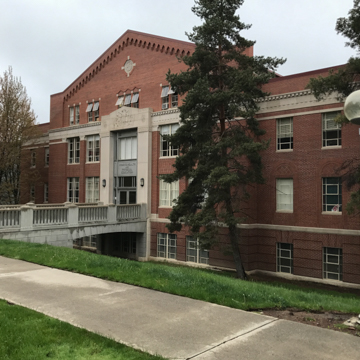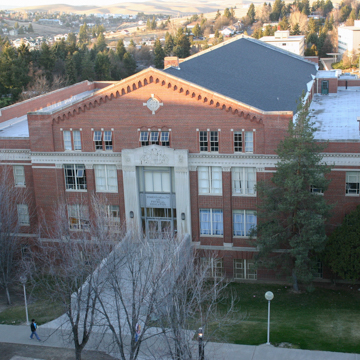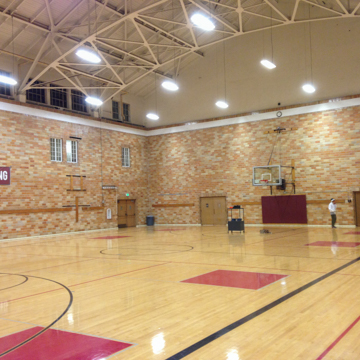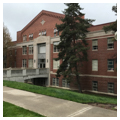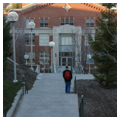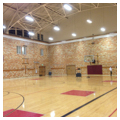You are here
Smith Gymnasium
The first athletic facility at Washington State University to be purpose-built for women, the Smith Gymnasium, constructed during the Great Depression, suggests the college’s commitment to a dignified physical setting for the health and well-being for its students—even during tough economic times. The gym was the third major physical education building constructed in an eight-year period from 1928 to 1936 (including Hollingbery Fieldhouse and Bohler Gymnasium), all designed by Stanley Smith and all in a row from west to east just north of Rogers Field on the northeastern edge of campus. It is arguably the most finely detailed among them, and the entire building remains essentially in its original condition.
The three-story Smith Gymnasium, or “Smith Gym,” also represents a transitional moment in the architectural history of the college. The building’s exterior is mostly lodged in an older architectural moment where references to western architectural history hold sway on the building’s main facade, whether through traditional materials such as brick and stone or design elements that provide the overall guise of a classical temple front. Yet the stone entry portal surrounds an aluminum frame with stylized lettering declaring the original building function as “Women’s Health and Physical Education,” characteristic of then nationally popular Art Deco or streamlined Moderne styles. Such styles, with their occasional use of exposed metal, proliferated in public buildings nationwide in the 1920s and 1930s and was common to projects funded by the New Deal–era programs of President Franklin D. Roosevelt. Although not widespread at the college, aluminum frames and stylized detailing common can be found on campus, such as above the east entries to Dana Hall and in medallions embedded on the floor near the original entrance to Holland Library.
The principal feature of the Smith Gym is the main gymnasium space itself: a two-story, multipurpose space that also blends the traditional and the modern through its use of materials. Recalling older traditions, the wooden court is clad in warm, light brown–colored tiled walls with built-in wooden railings, presumably for gymnastics exercises. Above that, an exposed metal truss supports a segmental arched ceiling permitting west-facing clerestory glass windows, with viewing areas also cut into the facade on the second floor.
The gym also includes wooden doors to offices, classrooms, and restrooms with original painted signage; wooden built-in trophy cabinets on the second floor; and staircases flanked by wooden and iron handrails. A swimming pool, for years shared by students from Pullman High School, is on the ground floor. Light-filled exercise rooms on the north side have views overlooking campus residential halls and the College Hill neighborhood beyond.
Constructed at a cost of $400,000 and built at least partially with student labor under a Works Progress Administration grant, the gymnasium was known initially as the “Women’s Gymnasium.” It was renamed in 1961 in honor of Helen G. Smith, who served as the chair of the Department of Physical Education for Women for thirty-three years, from 1928 to 1961.
Writing Credits
If SAH Archipedia has been useful to you, please consider supporting it.
SAH Archipedia tells the story of the United States through its buildings, landscapes, and cities. This freely available resource empowers the public with authoritative knowledge that deepens their understanding and appreciation of the built environment. But the Society of Architectural Historians, which created SAH Archipedia with University of Virginia Press, needs your support to maintain the high-caliber research, writing, photography, cartography, editing, design, and programming that make SAH Archipedia a trusted online resource available to all who value the history of place, heritage tourism, and learning.














